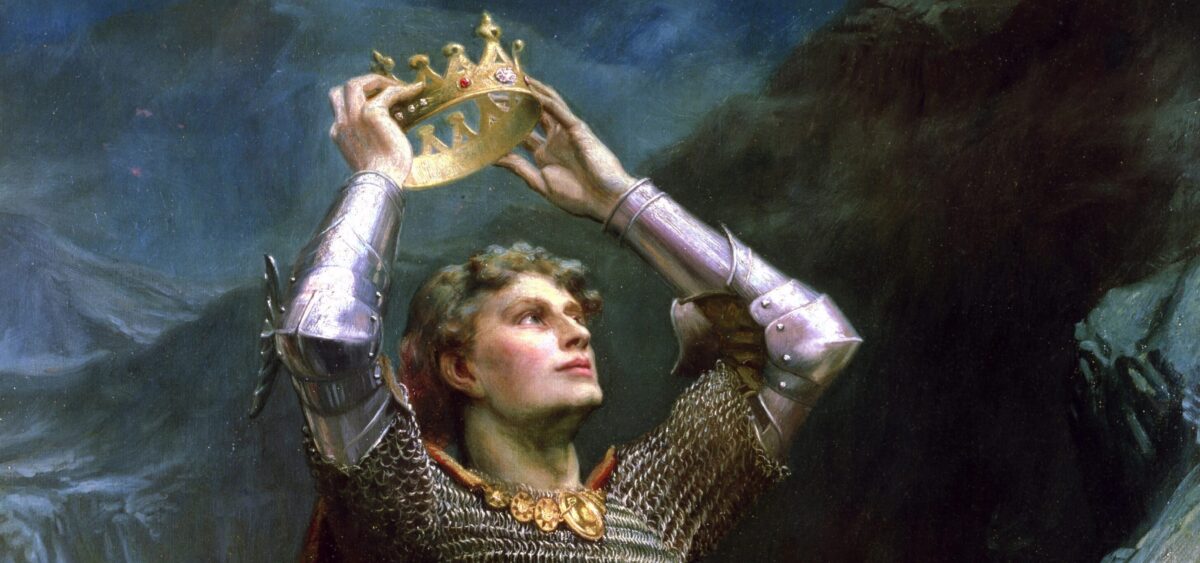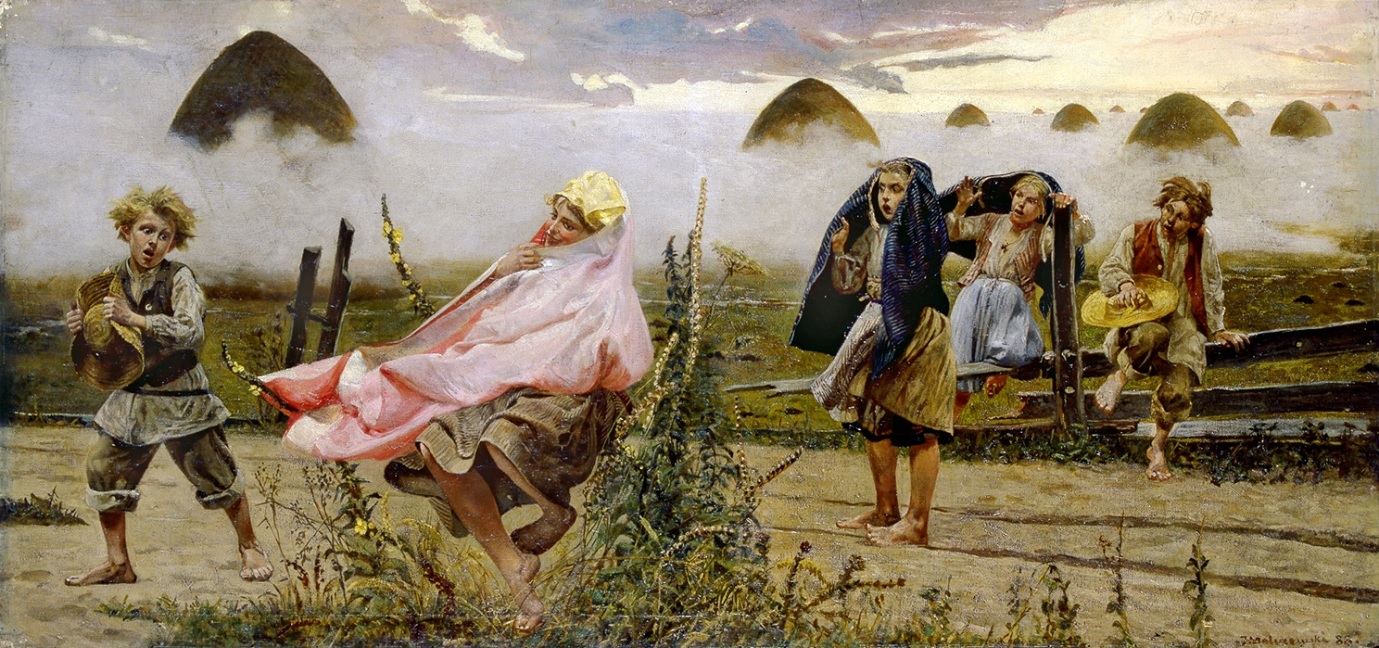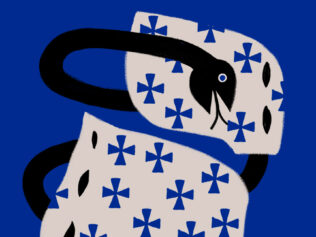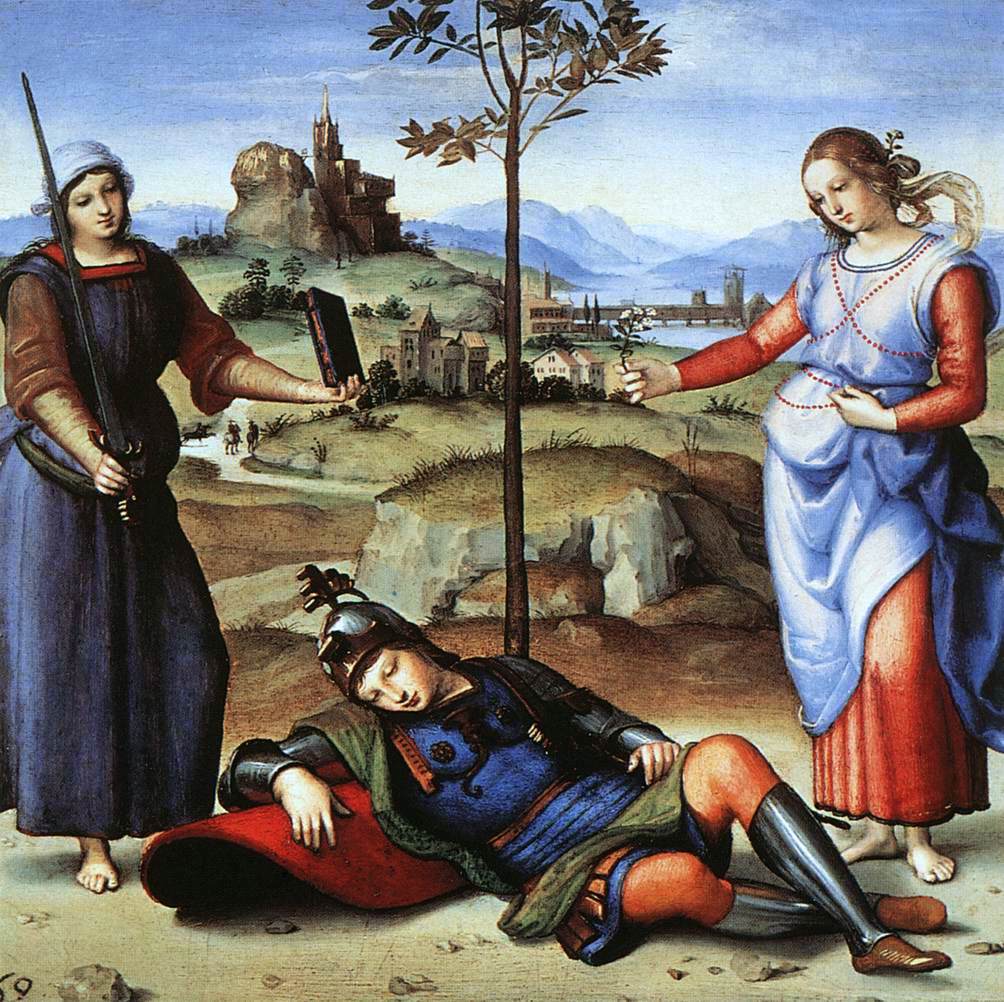
What do the Knights of the Round Table, the Wawel Dragon and Tolkien have in common? Celtic roots. Join us on a fascinating journey back to the origins of the Arthurian legends.
It’s Arthur – the semi-legendary, mysterious king from the distant past, the deep Middle Ages – who’s the best imaginable Celtic-era hero. The legend about King Arthur, the Knights of the Round Table, Guinevere, Isolde, Lancelot, Tristan and other figures connected with the Cornish castle of Camelot have lived in European culture for more than a millennium.
When we hear the name King Arthur, we imagine a typical forest, steep seaside cliffs, dark stone castles, and throughout this landscape, the shapes of steel-clad knights, riding off to seek adventure. A bit of a fantasy novel, a bit of a fairy tale, Celtic music in the background. We don’t even stop to think how close that Cornish king is to us, or how much this legend shapes us.
Bold and restless
It may seem that the Celts are a long-ago, faraway people, who used to live in France and then on the British Isles – now only a few of the nations of the United Kingdom claim Celtic roots and speak a language that comes directly from theirs. Yet all of northern Europe owes its heritage – in various parts – to Mediterranean and Celtic tradition. We don’t know exactly where the Celts came from, but from the middle of the second millennium BCE they lived in Central Europe, in what is today Czechia and Austria, and already in the 8th century BCE they could smelt and shape iron, cultivate crops and fight boldly, which is attested to by their contemporaries, the ancient Greeks and Romans. The Celtic peoples, bold and restless, spread throughout Europe, from Małopolska to Portugal. When Julius Caesar was conquering the north of Europe he went to war with Gaul, which he said was divided into three parts: the lands of the Belgae, the Aquitaines and the Celts. For us, the most popular Celts from those days are the comic-book Asterix and his valiant comrades, bravely squaring off with the Romans and with many of the characteristics – or rather vices – of today’s French people (though not a lot of Celtic blood flows in the veins of our contemporaries in the former Gallic lands).
The story of the Celts, Gauls or Galatians can only be made up of fragments, because no complete whole is known. For example, we know that the Celts had a distinctive way of building their settlements, not necessarily on rivers but always on hilltops, in areas that could have a defensive function through the very form of the land. In many places in today’s Europe, administrative divisions correspond to the hypothetical Celtic oppidum, a Latin name given by the Romans, and which successive tribes adapted in their own way. One such place is Kraków, and from the familiar sight of Wawel Hill, we can imagine how picturesquely the Celtic settlements must have been situated. Though it most often seems to us that people naturally settled on hilltops, this isn’t a natural rule, and important cities of the past were more often on rivers, at crossroads, near convenient natural ports. The unity of the pan-European Celtic world is attested to by onomastics: even though the etymology of Poland’s Galicia region isn’t entirely clear, one of the hypotheses describes a Celtic origin. But the Galicia in northwest Spain, on the Western edge of Europe, is precisely the land of the Gauls, a tribe separate from the other nations of the Iberian Peninsula. Perhaps it’s no coincidence that both ends of European culture, eastern and western, have an almost identical name.
Illiterate heroes of pop culture
We don’t have a lot of data on the development of Celtic culture over the millennia, because it was based on spoken tradition, passed on from one person to another, without the intermediation of writing. The Celts’ sages, the Druids, most likely studied for about 20 years, only memorizing knowledge, unsupported by notes, before they could play their social role of priests, judges or seers. Another Celtic priestly caste was the bards: singers or poets, who after long years of study, travelling between courts and settlements, presented their songs and stories to great crowds of listeners. But in contrast to the culture that developed over the centuries on the Mediterranean Sea and was transmitted by writing, the Celts’ culture was based exclusively on oral transmission. It was only the mediaeval Latin attachment to written records that brought the Celtic tales not just extraordinary popularity, but also immortality.
The most important figure to emerge from the Celtic tradition was King Arthur. Most likely he really was a Cornish ruler in the 5th or 6th century CE; the story has made him into the founder of the most outstanding chivalric order, the 150 Knights of the Round Table. Such a number opens up the possibility of describing the adventures of each member of this group in turn, which over the millennium and a half that has passed since the legend emerged has happened many times and in various ways. Over time, the stories of the knights were joined with the stories of their sons and grandsons. The first modern novel, Cervantes’ Don Quixote, describes their followers, made amusing by their anachronism and their naive faith in the truth of literature. We can posit the hypothesis that for the past 1000 years, King Arthur and the Knights of the Round Table were the most popular heroes of mass culture in Europe – and in the world they conquered.
Where does this popularity come from? Before the legend of King Arthur was written down, for half a millennium it was transmitted orally. The times changed, and the story must have changed too. Various versions still survive today, augmented in the 12th century with the story of the search for the Holy Grail – a miraculous cup into which the blood of the crucified Jesus is said to have flowed, and which was later taken to northern Europe and hidden by Joseph of Arimathea. But it’s certain that part of this legend emerged much later, apparently in the 12th century. It also contains the least poetic elements proper to the Celtic narrative.
Equal and fraternal
To become one of Arthur’s knights, you had to distinguish yourself with your integrity, courage and valour: becoming part of this exclusive group meant membership in the highest knightly caste. All the knights who sat at the Round Table were equal. The court of Arthur and Guinevere was found in Camelot, in the very spot where the knights also met at the Round Table. The main mission of this flower of knighthood was to fight evil: constantly travelling through the world, accompanied only by their squires, they reacted decisively to every manifestation of ill will from other knights. This was mainly accomplished through the duels they usually won and their participation in tournaments, but also by persuading those other knights, with a good word, to abandon their evil intentions. These constant journeys without a defined purpose brought them the name of knights-errant. Often the reason for their adventures was unacceptable, cruel or violent behaviour against women by powerful villains. It happened that the knights’ senses were disturbed by spells cast by evil witches and wizards – they saw and heard things that weren’t really happening.
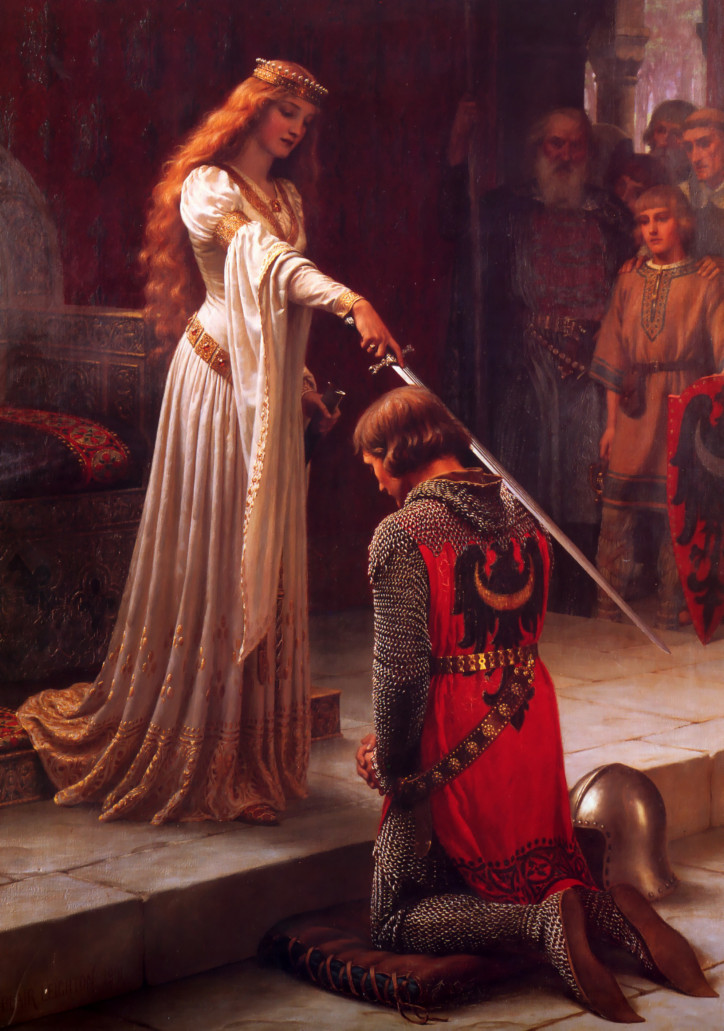
In fact, witchcraft and magic are present at every turn in the world of Arthurian legend: Arthur’s very entry into the world was made possible by Merlin and his spells. They made it so that Arthur’s true father, the king Uther Pendragon, for one night took on the form of the husband, fallen in battle, of a beloved woman who then became the royal consort. Making Arthur credible as the successor to the throne became a model for many later stories – only the right person can easily pull the magically powerful sword Excalibur from the stone. This motif was to appear over the next thousand years in various ways in novels, fairy tales, films, comics and computer games.
Alongside Arthur, there is room in Arthurian legend for exceptionally interesting figures, ambiguous and complicated. The most important of them, at least in the stories that have survived until our day, was Lancelot of the Lake, a knight of royal blood, the strongest, most skilful and most righteous of all of Arthur’s host. But he had a problem, which strangely did not seem to particularly bother the morality of the mediaeval audience: he had an ardent, apparently reciprocated love for Arthur’s wife, Queen Guinevere. Both denied that there was anything between them, and at the same time they eagerly met for a secret and certainly not innocent tryst. Through stratagems, open perjury and playing with ambiguities, they managed to keep their double infidelity in secret. In the end, because of this adulterous relationship, Lancelot’s attempt to recover the Holy Grail failed – it was done only by his son, Galahad.
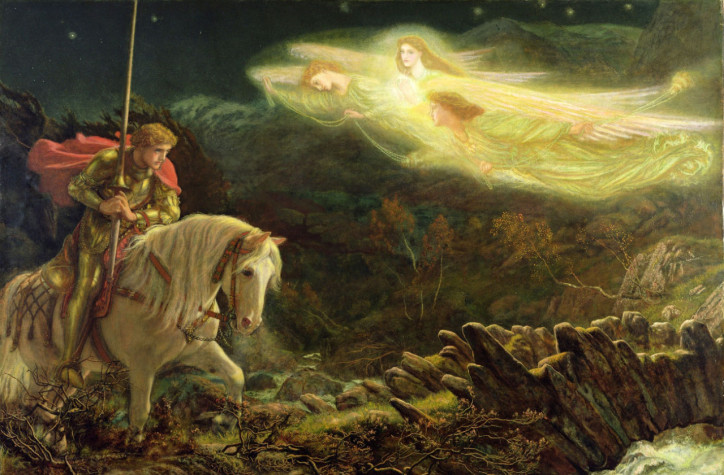
Operatic and (melo)dramatic
For the German tradition, an exceptionally important knight of the Round Table was Parsifal, a figure we find in very early versions of the legend; a paragon of virtue, primarily courage, but also in love with the royal wife. He was presented as King Arthur’s closest friend, who became the guardian of the Holy Grail. Parsifal’s son is Lohengrin, the Knight of the Swan – the title character of one of Richard Wagner’s most popular operas, still today a regular presence on the most important musical stages around the globe.
In turn, most likely in Portuguese the story of Amadís de Gaula emerged, one of the last hit stories about knights. When Don Quixote sets out to seek adventures, his friend decides to burn all the books about knights in the hero’s library, deciding that only the works about Amadís de Gaula are worth saving.
A specific place in the Arthurian tradition, in many ways, is held by the story of Tristan and Isolde. According to some versions of the legend, Tristan became a knight of the Round Table, though his connection to the court at Camelot is quite loose. In Poland, thanks to Tadeusz Boy-Żeleński, the most popular is the extensive 1900 compilation of strands of this history, written by the French writer, mediaevalist and savant Joseph Bédier. It’s the story of Tristan, nephew of the ruler of Cornwall (King Mark) and the Irish queen Isolde of the Golden Hair, who against their will, because of a spell hidden in a love potion, are eternally bound by love. Though Isolde becomes the wife of King Mark, and Tristan is his courtier, they can’t resist their passion. Even when fate decides to tear them apart – Isolde remains in the royal Tintagel, and Tristan marries Isolde of the White Hands – they remain the most important for each other.
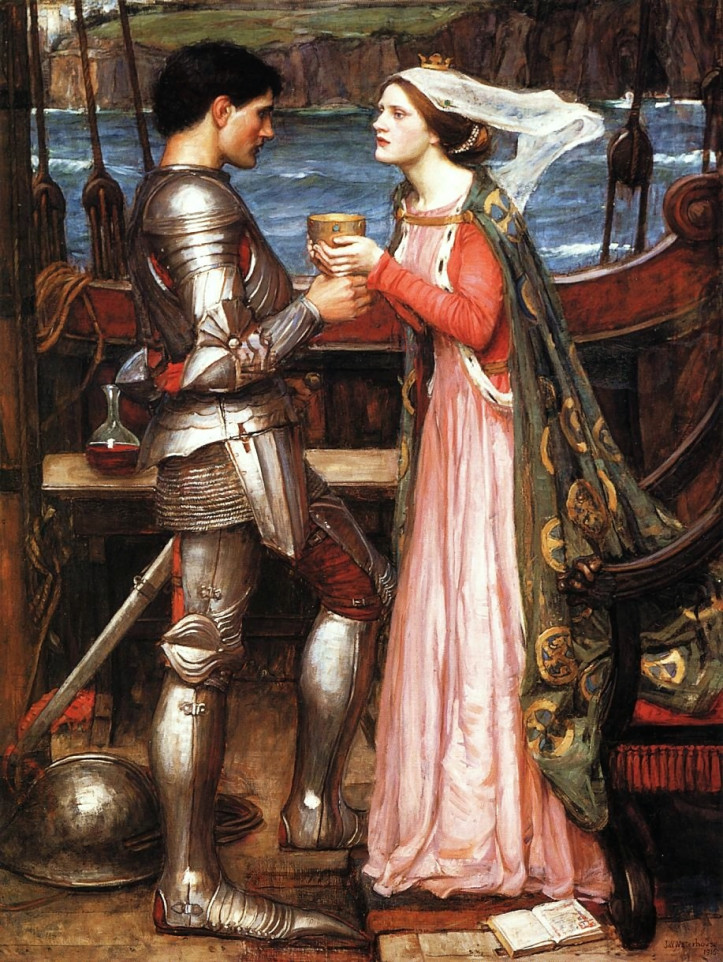
This legend is one of the most interesting love stories created by European culture, showing love at various stages, speaking to the emotions of any listener or reader who has ever been in love, allowing them to identify with the heroes. Even though it describes a relationship contrary to the tenets of religion and social norms, the audience feels sympathy with the heroes, taking their side. The fact that in reality they’re doomed to separation, though remaining together in their thoughts, becomes an outline repeated many times in melodramas over the centuries – the great European love stories draw on this legend to a greater or lesser degree. In fact, the Shakespearean couple Romeo and Juliet, thanks to their youth and simultaneously socially-accepted love, took on greater popularity over the centuries. Nonetheless, the Celtic story of necessary love, though impossible because of its depth and ambiguity, is also permanently inscribed in the canon of European culture.
The power of womanhood
It’s worth pausing for a moment to examine the women who appear in the Arthurian legends. The best-known, Guinevere and Isolde, are, truth be told, beautiful adulteresses, though that’s no reason to condemn them or want them to be punished. Morgana, meanwhile, is the female equivalent of Merlin: a sorceress imbued with great power, sometimes presented as an evil witch, but more often as a person who can use the power of sorcery with a feminine sensitivity. Numerous other female figures who appear in these legends, naturally as secondary characters, are significantly more complex than the knights, who behave schematically. These woman know how to tempt, persuade with reason, incline to sin, use deceptions and stratagems – and if necessary even magic – when they’re fighting for what’s theirs. Though in the stories their beauty is usually their main attribute, it’s the complicated nature of the roles they play that attests to the Celtic sensitivity to the power of womanhood.
Today, more than 10 centuries after the Arthurian legends were created, we can travel to Cornwall and on its northwest coast see the Castle of Tintagel, sleep in a hotel called Camelot and think about how in these picturesque surroundings, a legend was born. We can also go to Kraków to Camelot Dungeon and read Tolkien over a beer – just as much as in Cornwall, we’ll be surrounded by the Celtic world.
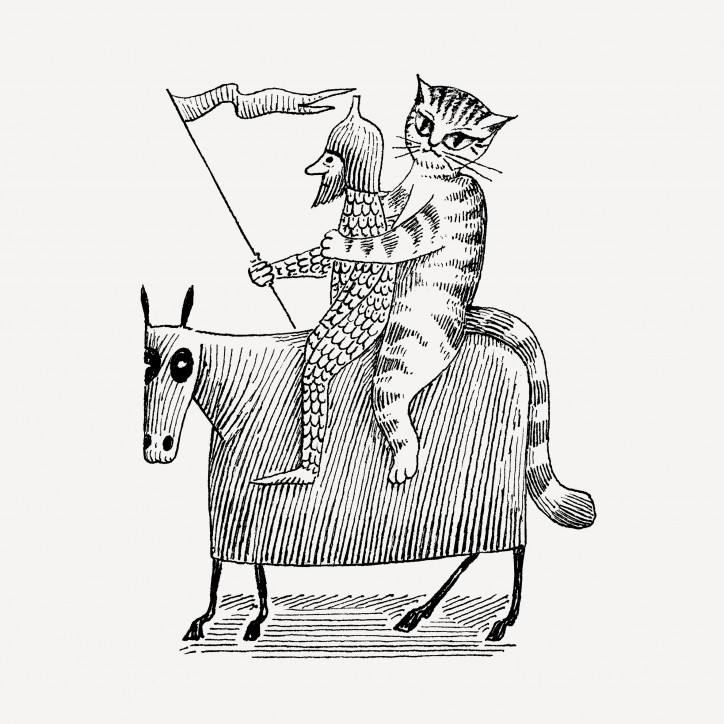
Translated from the Polish by Nathaniel Espino


